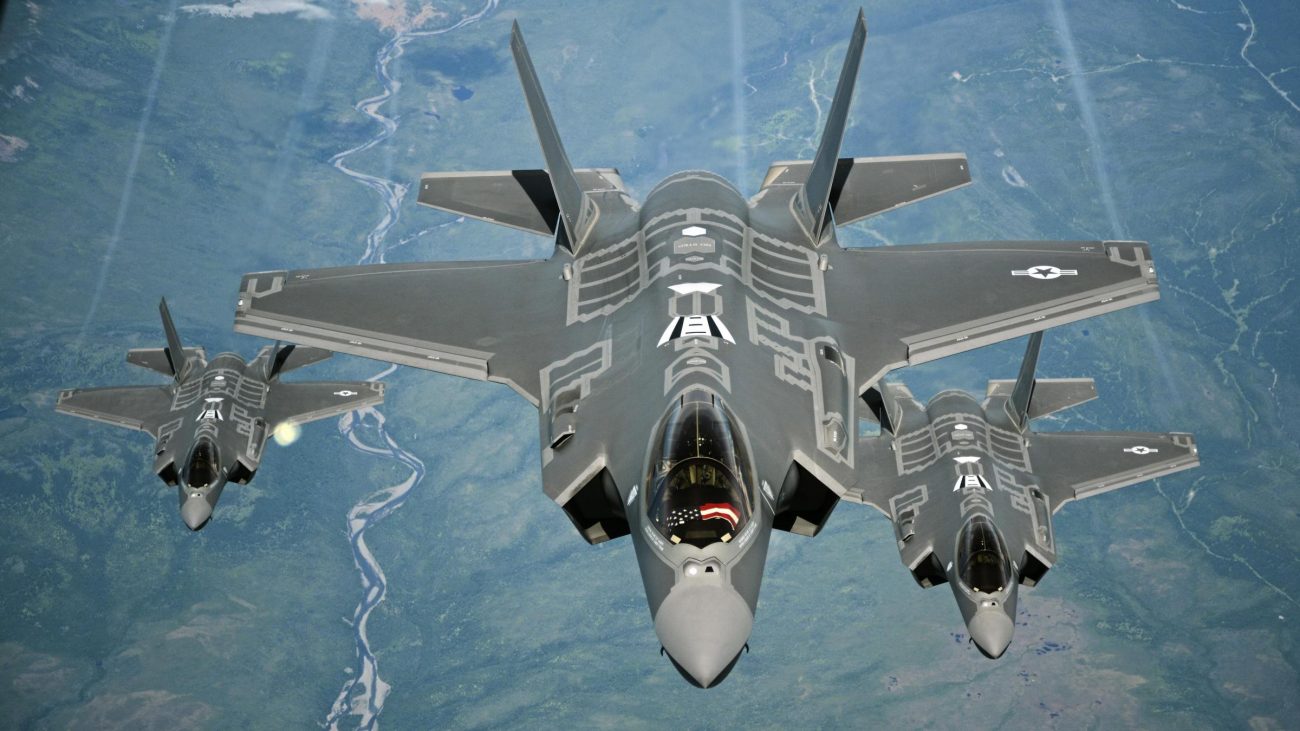To keep costs of the fifth-gen F-35 stealth jets down, the US Department of Defense is nearing a deal with Lockheed Martin for the supply of around 375 F-35 fighter jets over three years.
Due to lower production quantities and annual inflation, US procurement officials anticipate a price rise for even the most common version of the jet, the F-35A.
The F-35A, in its final series production form in 2007, cost $221 million a unit. Since then, production quantities and know-how have increased, helping the price of the stealthy fifth-generation fighter fall to $79 million a jet as more countries joined the program.
Before the pandemic, 478 jets were planned to be purchased over three years, but the 22% drop to 375 units hiked the overall cost of the F-35A.
This was a part of a 2019 purchase agreement by the Pentagon plan to “block buy” 478 F-35 fighter jets over three years, allowing Lockheed to buy larger quantities of components to reduce costs by about 8%, to $34 billion. Negotiating annual contracts would have been costlier.
This was before the Covid-19 pandemic-induced lockdowns when supply chains and industrial activity were not disrupted.
The F-35 comes in three configurations: the A-model for the US Air Force and US allies; the F-35B Short Take-Off Barrier Arrested Recovery (STOBAR) and vertical landing capable of operating from an aircraft carrier; and the F-35C meant for even advanced attack and air dominance roles.
The report added that “data rights” briefly held the latest talks. Still, the stalemate was broken by a “handshake” decision earlier this week that finalized the aircraft’s quantity and price.
However, it would be weeks until a final price is locked even after an official agreement, which industry and defense officials still expect to be in the range of $30 billion for the 375 planes.
The handshake agreement comes at a time of the return of the Farnborough Airshow, where the jet was advertised with impressive aerobatics for prospective buyers. The airshow was held from July 18 to July 22.
The ongoing Ukraine war and hostile China-Taiwan relations appear to be an apt time to buy the Lockheed jets for nations at odds with Russia and China.
At the height of the pandemic, Lockheed predicted the jet’s cost to rise owing to decreasing production and falling economies of scale as manufacturing halted and supply chains were in disarray globally. Lockheed executives have said that any country with an F-16 jet, the predecessor to the F-35, is a potential customer.
The F-35 has had several recent successes in jet fighter competitions, including Finland, Switzerland, and Germany. Potential customers include Greece and the Czech Republic.
Foreign military sales such as the F-35 are considered government-to-government deals where the Pentagon acts as an intermediary between the defense contractor (in this case Lockheed) and a foreign government. The program has so far never participated in competitive bidding with other jets.

Lockheed’s Fortunes Rest On The F-35
The F-35 jet program accounts for about 27% of Lockheed’s revenue. The rest is met by sales and production of the F-16, which the USAF chief of staff General Charles CQ Brown has long indicated will remain in service for the next two decades, besides other countries which use the single-engine fighter.
The plane’s upgrade and maintenance are also undertaken at its Greenville plant in South Carolina. Upgrades of the USAF’s C-5 Galaxy superheavy strategic airlift also form a substantial part of the company’s revenue source.
This year’s profits from the company’s Missiles and Fire Control Unit, which makes the High Mobility Artillery Rocket System (HIMARS), currently used heavily by Ukraine, were $418 million, up 4%.
Reuters quoted Chief Financial Officer Jay Malave, who was hoping to increase the Patriot Advanced Capability-3 (PAC-3) production amid the Ukraine war.
Countries That Use The F-35
The F-35 Lightning II is fully operational with the United States, Israel, UK, Netherlands, and Norwegian air forces, while Canada, Italy, Germany, Japan, and Finland are on their way to receiving it.
Canada has announced the arrival of the first nine fully operational F-35s by 2025 as a part of its 88-jet fleet. Italy has already taken deliveries of 16 of the 60 F-35As it plans to acquire while also considering buying 30 F-35Bs, equally divided between the Air Force and Navy.
Germany’s Luftwaffe is slated to receive more than 35 F-35As to meet as per its announcement on March 14 this year, apparently after initially discounting the fighter – a reversal spurred by the Russian military intervention in Ukraine. Germany and Italy aim to replace their aging Panavia Tornado fleets with the F-35As.
Japan’s government announced purchasing 105 F-35s in late 2020 for the Japanese Air Self-Defense Force (JASD). It already hosts the US Marine Corps (USMC) Fighter-Attack Squadron 242 in Iwakuni.
Finland has also announced it is basing the planned F-35 squadron at the Lapland Air Force Base in Rovaniemi by 2026 after approving the purchase of 64 units in December 2021. The jets are expected to reach by 2026 and be fully operational by 2030.
- The author can be reached at satamp@gmail.com
- Follow EurAsian Times on Google News




